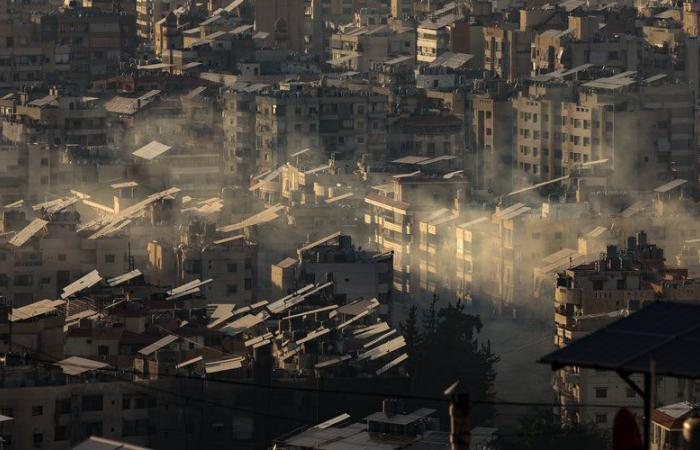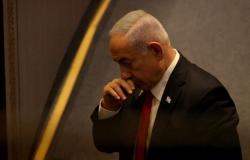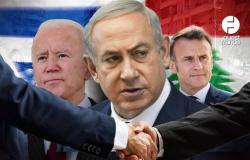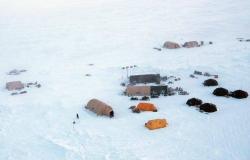
The fragile agreement concluded after two years of war between the Israeli army and the armed Lebanese movement supported by Iran entered into force on the night of Tuesday to Wednesday.
A ceasefire between Israel and Hezbollah came into effect early Wednesday in Lebanon, after more than a year of cross-border hostilities and two months of open warfare between the Israeli army and the armed Lebanese movement backed by Iran.
The truce, valid since 04:00 (02:00 GMT), is intended to interrupt the conflict which has forced tens of thousands of people in Israel and hundreds of thousands more in Lebanon to flee their homes.
These hostilities led to bombings on Lebanon, killing thousands, and the deployment of Israeli soldiers across the border between the two countries to confront Hezbollah fighters.
The pro-Iranian movement, claiming to act in support of Hamas, opened a front against Israel on October 8, 2023, the day after the unprecedented attack by the Palestinian Islamist movement in Israel which triggered the war in the Gaza Strip.
US President Joe Biden welcomed the ceasefire agreement on Tuesday, “a new beginning” for Lebanon and a “good news” for which the United States and France had been working for weeks.
The Israeli army has 60 days to gradually withdraw from Lebanon, a senior US official said on condition of anonymity, and Hezbollah must also withdraw from the southern border with Israel.
Before the final Israeli green light, Israeli Prime Minister Benjamin Netanyahu indicated that the duration of the ceasefire would depend “about what will happen in Lebanon”. “We maintain complete freedom of military action” in Lebanon, he added: “If Hezbollah violates the agreement and tries to rearm, we will attack“.
The Israeli army warned residents of southern Lebanon shortly after the ceasefire came into force not to approach the positions where it remains deployed.
“You are prohibited from heading towards the villages that the IDF (the Israeli army, Editor’s note) have ordered to evacuate or towards the IDF forces in the region”said army spokesperson Avichay Adraee in a message on X.
According to Lebanese authorities, at least 3,823 people have been killed in Lebanon in total since October 2023, most of them in recent weeks. Hostilities there have displaced some 900,000 people, according to the UN.
On the Israeli side, 82 soldiers and 47 civilians were killed in 13 months in clashes with Hezbollah, according to the authorities.
On Tuesday, residents of northern Israel interviewed by AFP said they were opposed to a ceasefire: “it would be a serious mistake until Hezbollah has been completely eliminated”judged Maryam Younnes, a 29-year-old student.
“Focus” on Iran
The announcement of the agreement came after Israel on Tuesday shelled the center of Beirut and its southern suburbs, a stronghold of Hezbollah, like never before since it launched a bombing campaign on September 23 targeting the movement in the neighboring country, then began ground operations in the south on September 30.
Less than an hour before the agreement came into force, at least two strikes targeted the southern suburbs of Beirut, according to images broadcast by AFPTV, shortly after calls to evacuate an area in the center of the Lebanese capital and another in its southern suburbs by the Israeli army. Tuesday evening, Hezbollah for its part said it had launched drones against “sensitive military targets” in Tel Aviv.
Hezbollah did not participate directly in the truce negotiations, instead calling on Parliament head Nabih Berri to negotiate on its behalf, and has so far not commented on the agreement.
The war in Lebanon has considerably weakened the pro-Iranian movement. Its leader Hassan Nasrallah was killed on September 27 in a powerful Israeli strike on the southern suburbs of the Lebanese capital, as were many of his senior officials.
Benjamin Netanyahu considers that the truce will allow Israel to“intensifier” its pressure on Palestinian Hamas, against which it is leading a deadly offensive in the Gaza Strip.
“When Hezbollah is out of the game, Hamas is left alone (in Gaza). Our pressure will intensify, and this will contribute to the sacred mission of freeing our hostages”he declared on television on Tuesday.
The ceasefire will also allow Israel to “focus on the Iranian threat”added Mr. Netanyahu. Tehran is the main supporter of Hezbollah and Hamas and other movements in the Middle East that oppose Israel.
Iran itself has carried out two missile and drone attacks against Israel since the outbreak of the Gaza war, most of them intercepted.
Hezbollah attacks in northern Israel have forced tens of thousands of residents to evacuate their homes. The Israeli authorities claim to be fighting the Lebanese movement to allow them to return.
Paris and Washington are watching
According to Joe Biden, the truce agreement was designed to result in a permanent cessation of hostilities between the two parties.
Under the agreement, the Lebanese army must take control of the border area on the Lebanese side, and “What remains of Hezbollah and other terrorist organizations will not be allowed (…) to threaten Israel’s security again”said the American president.
The United States and France must ensure that the ceasefire agreement is “implemented in full”declared Tuesday evening Joe Biden and his counterpart Emmanuel Macron in a joint press release.
American Defense Minister Lloyd Austin, for his part, welcomed Tuesday evening a “diplomatic resolution” which “will allow tens of thousands of Lebanese and Israeli civilians to return home in complete safety, on both sides of the border , and to put an end to the violence and destruction caused by this conflict.
At the same time, the Israeli army continues its strikes on the besieged Gaza Strip, where at least 22 people were killed on Tuesday, according to Civil Defense, and where thousands of displaced people are trying to protect themselves from the rain and the cold.
The war was sparked by the Hamas attack, which led to the death of 1,207 people on the Israeli side, mostly civilians, according to an AFP count based on official data, including hostages killed or died in captivity.
The Israeli offensive carried out in retaliation in Gaza left at least 44,249 dead, the majority civilians, according to data from the Hamas Ministry of Health, deemed reliable by the UN.





